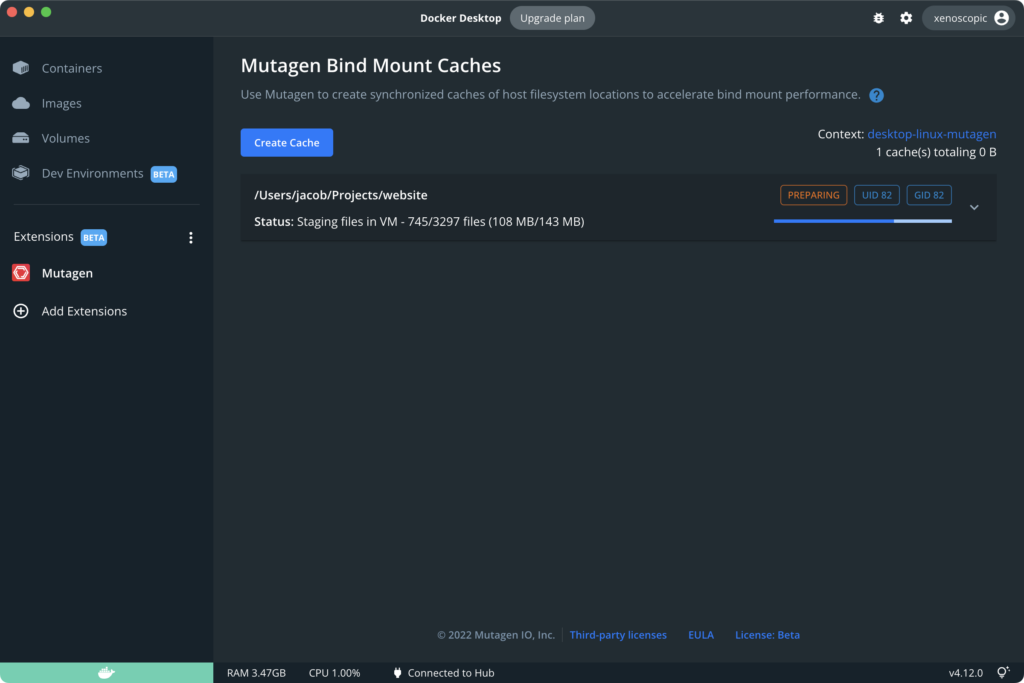Docker, Inc. today announced it has acquired Mutagen as part of an effort to integrate open source file synchronization and networking software within Docker Desktop.
Webb Stevens, general manager for Docker Desktop, said that capability will make it simpler for developers that use Docker Desktop to build applications remotely by making it easier to transfer code, binary artifacts and network requests.
In fact, despite the rise of the cloud, the bulk of application development continues to be done on local machines, noted Stevens. Most developers prefer not to experience any network lag when writing code. Mutagen’s software makes it simpler to synchronize code with, for example, a staging server that is at the core of larger DevOps workflow, he added.
In contrast to a cloud computing environment, Docker Desktop also enables developers to customize their development environments as they best see fit, noted Stevens.
Mutagen is one of several acquisitions Docker has made of smaller companies that have built tools that improve the developer experience. Docker is incorporating these companies’ tools in Docker Desktop alongside features it continues to develop internally. In addition, Docker recently added a Telepresence for Docker that makes it simpler for developers to remotely access IT infrastructure. Telepresence is an open source project originally developed by Ambassador Labs now being advanced under the auspices of the Cloud Native Computing Foundation (CNCF).
Docker, Inc. claims there are now more than 13 million developers building applications using containers and that it has more than 70,000 commercial customers. Overall, Docker, Inc, projects that more than 750 million applications projected to be built between now and 2025 and that its Docker Desktop tool will remain relevant regardless of whether those applications are built using traditional containers or WebAssembly (Wasm) artifacts. Originally developed under the auspices of the World Wide Web Consortium (W3C) for building browser applications, Wasm is emerging as a portable binary instruction format for building software that describes a memory-safe, sandboxed execution environment that can run anywhere.
Of course, there is still much work to be done in terms of enticing more developers to embrace containers. It’s estimated there are more than 50 million developers of enterprise applications. Most of those developers are still using frameworks to build monolithic applications using various legacy artifacts. However, as more enterprise IT organizations require developers to build applications using containers that make it simpler to run applications on multiple platforms, the overall percentage of developers using tools such as Docker Desktop should increase.
In the meantime, it’s probable most developers will continue to work remotely for many years to come either because of personal preference or the simple fact they are contractors rather than full-time employees that can be compelled to come to an office. As such, the need to synchronize development environments with remote infrastructure isn’t going to go away any time soon. Instead, the focus needs to be on finding ways to as inspiration strikes to enable developers to write code anywhere and anytime in an era where writing code is still as much art as it is science.




